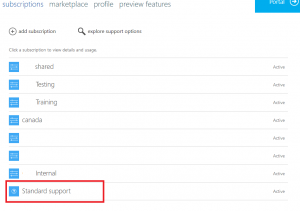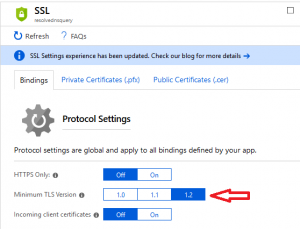I’ve been having some difficulty sorting out all the monitoring components available within Azure for IaaS resources, and finally sat down to do some dedicated reading on this.
Part of the confusion for me has come from the introduction of the Azure Monitor, Azure Security Center, and the removal of the Operations Management Suite (OMS) branding.
The overview for Azure agents for monitoring describes the following agents as viable for monitoring. I’ve added in additional wording that is used in other areas and ARM templates for these, along with some potential use cases:
Azure Diagnostics Extension
Somewhat a legacy agent at this point (my opinion), it collects Performance counters, System Logs, IIS Logs, and others. These are all stored in a Storage Account. Performance counter information can be sent to Azure Monitor (i.e. Log Analytics), but not system logs and other data sources.
This extension can be deployed with the Set-AzureRmVMDiagnosticsExtension cmdlet.
If using an ARM template, it is referenced as resource name “Microsoft.Insights.VMDiagnosticsSettings” (by default and by recommendation), publisher “Microsoft.Azure.Diagnostics”, and type “IaasDiagnostics”.
Often Microsoft docs refer to this as “guest-level monitoring”.
Frustratingly, this agent is also known by “Microsoft Monitoring Agent Diagnostics“, particularly in Visual Studio. This nomenclature conflicts with the Log Analytics agent, but doesn’t seem to be very common.
This type of monitoring is needed to enable the full suite of Cloudyn metrics and optimizations, particularly for memory counters. It is called “extended metrics”, and the Microsoft Docs article specifically says that it is not compatible with Log Analytics.
The Azure Diagnostic extension (for VMs) is not to be confused with Azure Monitor Diagnostic logs, which feed data from Azure services into Azure Monitor.
Log Analytics Agent
Commonly referred to as the “Microsoft Monitoring Agent” (MMA), this is used to collect data from many different types of sources and enable Azure Monitor solutions in the workspace on IaaS resources. This is the direct integration of a VM into Azure Monitor beyond the default metrics that are provided. It is also used to support the Hybrid Runbook Worker feature of Azure Automation.
The MMA is also a required component for Azure Update Management.
There is a Log Analytics VM extension that installs the Log Analytics agent and registers it with a particular workspace.
If using an ARM template, it is referenced as a resource with publisher “Microsoft.EnterpriseCloud.Monitoring”, type “MicrosoftMonitoringAgent”, and commonly name “OMSExtension”.
If using PowerShell, it can be deployed with this cmdlet: Set-AzureRmVMExtension -ExtensionName “Microsoft.EnterpriseCloud.Monitoring”
Important: the Azure Security Center automatically provisions the Log Analytics agent (MMA) and connects it to a workspace – usually a new one but you can configure it to use an existing one.
A question I’m still investigating is whether enabling a VM for Azure Security Center with the MMA will automatically enable appropriate features within Azure Monitor – will the VM become a data source for Log Analytics with the collection of system logs and performance counters?



